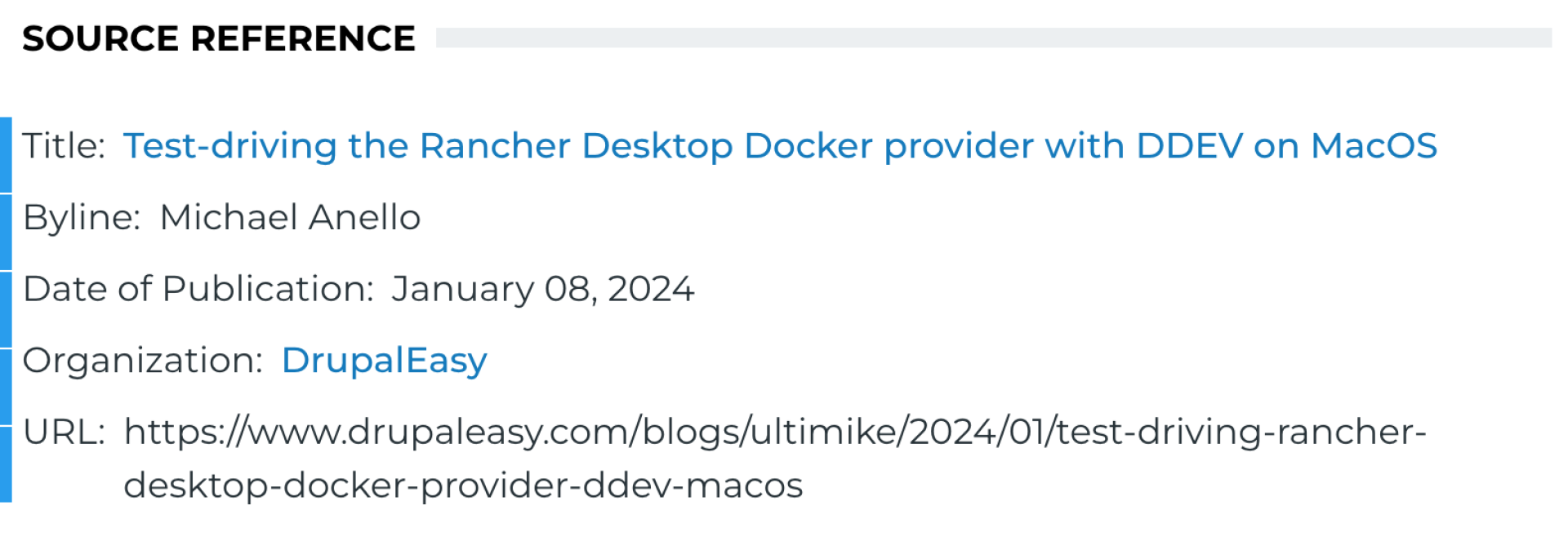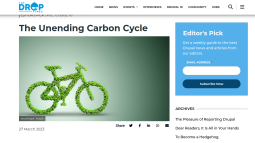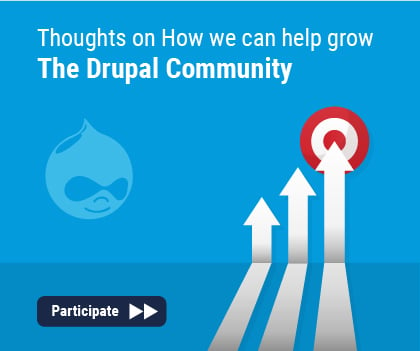How TDT Is Evolving: Change Records from Late 2023
At The DropTimes (TDT), we constantly evolve. The formative steps for us were challenging. We might be just out of infancy, but still in childhood. That does not give us any excuse not to be a better version of what we were yesterday. As we align with the build-in-open philosophy, let us record our recent decisions in response to community feedback.
Before that, it would be ideal to state how and why TDT exists. We are here to celebrate everything Drupal, from community representatives to business entities, from modules to distributions and recipes, and individual developer stories to community events. We intend to take Drupal beyond the community, attract new talents, enlarge the market size, and bring more business to Drupal agencies, better pay to Drupal developers, and more lifespan to Drupal as a CMS and a DXP. We intend to be an extended marketing arm for the community without compromising the ethos of a free software ecosystem.
The Talking Drupal Episode #384 from January 2023 hosted Anoop John, the founder of The DropTimes. Our beloved readers can find the founder's vision behind TDT by listening to it.
Writing for the web involves content creation, keyword targeting, search engine optimisation, distribution channels, identifying and reaching the target audience, and less journalism. We wanted to alter that. We wanted to do journalism. But with limited resources and a finite funding channel, it took a lot of work. So, we made baby steps. We made a channel to repurpose content from various Drupal entities while taking gentle strides in journalism. That way, we amplified all Drupal agencies' voices without prejudice and started covering events and interviewing developers.
Moving forward, we want to do more journalism. With the community support, we shall reach there soon. Sans community backing, we might limp a little and still get there. We are here to stay.
Some might wonder what our revenue model is. We are not thinking of moving behind a paywall. We haven't started publishing any sponsored content either. No third-party advertisement channel has been set up. Still, we are paying salaries, including mine. And the developer expense, too. But it translates to marketing. Not particularly for one entity but for a collective of whoever invested in Drupal. When the market widens, everyone will get a bigger slice of the pie, and so do we. We are confident that smart work pays dividends, and we are happy to spend for a noble cause, the cause of marketing Drupal to the outside world.
Now, let me come back to what I wanted to record. We have received constant feedback from the community from day one of our operations and are doing our best to address that. We are strengthening the feedback loop that we are in by actively responding to community members, most of them our well-wishers, albeit some who are sceptical of our 'agenda.' We want to reassure you that we are not a corporate entity with vested interests trying to sneak in some evil designs. We owe to the beautiful community that made Drupal possible; this is our way of paying respect.
So, based on community feedback and our internal feedback mechanism, we identified some of our shortcomings and have started engaging them. Here is a summary of our actions on top of that.
Content Sourcing and the Use of AI
External blog summaries, a curation of article summaries published by other entities, constitute a significant chunk of the content in TDT. We needed to alter that and push the editorial team to create exclusive content. This resulted in them scooping Drupal change records for articles. They lacked an in-depth technological background and used AI to make those, resulting in 'substandard or irrelevant articles,' a perspective some readers shared.
Changes Made:
- Recognised that AI is a new arrow in our quiver and officially embraced its use. There is no meaning in acting alien to technological advancements. Be more adept at nocking the bowstring. Either you master it, or others will.
- Brought in a process around using AI in content production, specifically, asked not to engage Chat-GPT or other AI tools for articles with bylines. Sub-editors may use Grammarly or other means to fix the grammar and typos. But if the article is exclusive, prepare it manually and vet it meticulously. AI tools might mature in time.
- Changed the way how external blog summaries were shared. The editorial team should only make an introductory post about the blog published elsewhere, which should be at most two paragraphs (Previously, it used to be descriptive). After this introduction, readers should be routed to the original article.
- We brought a new form in our edit suite to effect that change. There would be five fields in the form, namely Title (Headline), Byline, Date of Publication (Dateline), Organisation (that published the blog), and URL. The title would also be hyperlinked to the original article. This will be displayed as a source reference beneath every such summary. A screenshot is attached herewith for reference. [Link: https://www.thedroptimes.com/36704/switching-rancher-desktop-transition-ddev-macos | Switching to Rancher Desktop: A Transition for DDEV on MacOS]

- Prepare external blog summaries with the help of AI and save time around them. Use the time gained to read up on technology innovations happening in various fields and be updated.
Whenever AI is invoked, select a slider to insert a disclosure stating, "This content is produced with the assistance of AI." (We introduced it by the end of November 2023.) This will appear beneath the Source Reference in published content. See how it will appear (You can see that in the above-linked article summary, too):

Screenshot of how TDT provides a disclosure for an article written with the help of AI - Stop making articles based on Drupal change records unless checked for relevance and accuracy by the respective developers or vetted by other developers of long-standing repute. Gain the knowledge in the meantime to become an expert yourself.
- For content needing a technological overview, we have specifically put in a mechanism where such articles will go through a tech review process that takes volunteer time from external developers. Content could wait. Reputation does not.
Content Classification
External blog summaries and exclusive articles were being displayed together. There was no visual cue to differentiate a repurposed blog post from a news article or an event from an article.
Changes Made:
- Introduced a field dubbed "Content Format" in the edit suite wherein the editorial team would have to select from several options, including External Blog Summary, News, Article, Listicle, etc, to name a few. According to the selection, the display view will be sorted.
- Moved all external blog summaries to a newly introduced view, "Planet." See: https://www.thedroptimes.com/planet. Started displaying it as a separate block on the home page (screenshot attached).

- Made sure that only news stories would appear in the view' ''News.' See: https://www.thedroptimes.com/news. News stories would be about events, releases, and happenings such as mergers and acquisitions. The 'Latest News' block on the home page will skip showing external blog summaries and other articles.
- Exclusive articles and listicles published by us and other featured content will be displayed in the 'Featured' view https://www.thedroptimes.com/featured
- Interviews will appear in the 'Interviews' view: https://www.thedroptimes.com/interviews. It might also appear in the 'Featured' view, as interviews will probably be on the featured queue.
- Blogs written by us will be available at 'Open': https://www.thedroptimes.com/open. Since we adhere to the 'build-in-public' motto, anything we do substantially must be recorded here.
- Tutorials, training information, books, and other learning resources will be curated on the 'Learn Drupal' landing page: https://www.thedroptimes.com/learn-drupal.
- 'Events' will be listed at https://www.thedroptimes.com/events. Beneath each event page, news stories related to that event will be displayed.
- Started a separate view around 'Drupal Initiatives.' We shall update it slowly and steadily. https://www.thedroptimes.com/drupal-initiatives
- 'Jobs' already had an exclusive view. It is where we curate Drupal-related job offerings by Drupal agencies and other organisations. https://www.thedroptimes.com/jobs
Newsletter
We have had to define written criteria for what to include or exclude in a newsletter. Our weekly newsletter, "Editor's Pick," follows a storytelling pattern after which the picked articles are listed. All issues of this newsletter can be accessed at https://www.thedroptimes.com/newsletter/editors-pick. Each member of the editorial board is taking turns writing the newsletter. The number of selected stories varies considerably, sometimes forcing the email provider to truncate the content.
Changes Made:
- Limited the maximum number of stories listed to 16.
- Select only featured articles, news stories, event updates, and interviews for curation. Avoid external blog summaries.
- Plan on starting a separate daily newsletter containing all content published on a given day.
There were other areas for improvement and action items that we identified and implemented that were less severe. But I presume this would clarify our position regarding the community's primary concerns.
We are a small, passionate group and do not possess the luxury of employing an experienced Drupal developer for editorial overview in the current scenario. Even if we can, their expertise may be better suited for coding rather than editing. It leaves us to rely on volunteer force to do the fact check or open up for collective feedback and active response. Even so, we now put our best effort into ensuring that a Drupal expert verifies the technical content before going to publishing. We always try to contact the maintainers regarding modules through LinkedIn, email, or Drupal Slack for specific features. Eg. The GIS module list is prepared with a GIS expert's support.
While there might be specific feedback concerning individual articles, they can be dealt with individually and edited for increased accuracy. Removing any published content based on relevancy calls is better left to us. We are very particular in holding our editorial freedom intact.
We may have based some stories on announcements and blog posts published by the Drupal Association or some company. This happens, especially when it concerns a relevant news story, such as the election to the board of directors or a merger and acquisition about which a company had released a press communique. On every such occasion, proper attribution is given by quoting from the press release or announcement and hyperlinking to it. How to word the attribution and where to link the original article are subjective matters about which different entities have different opinions. We are open to considering genuine opinions and making appropriate changes.
We look forward to constructive feedback from the Drupal community so that we can improve and exceed the expectations. We continuously evolve, want transparency in that process, and shall publish what we do in the 'Open.'
We are in Drupal Slack as #thedroptimes (channel), and I am also available as @Sebin Abraham Jacob. Our community manager, @Ben Peter, will be the primary Point of Contact (PoC) for generic inquiries. You may share stories on editor[at]thedroptimes[dot]com or use our contact form.
Last but not least, kindly subscribe to our social media channels on Facebook, LinkedIn, and X (formerly Twitter).
We are looking forward to more engagement.
Sincerely,
Sebin A. Jacob,
Editor-in-Chief, The DropTimes.









